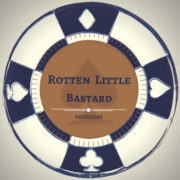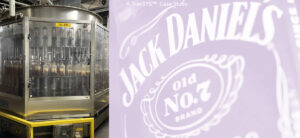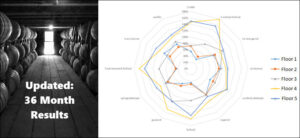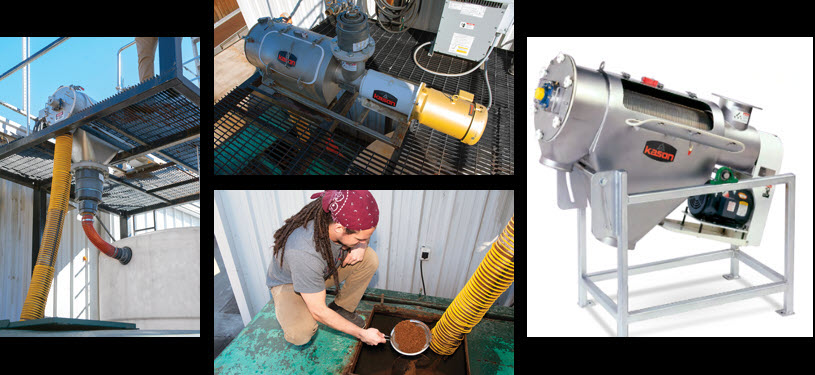
Bendt Distilling Company in Lewisville, Texas is a maker of a variety of handcrafted whiskeys. Founded in 2012 by Natasha and Ryan DeHart, Bendt Distilling produces 1200 barrels per year of straight whiskeys and whiskey blends, employing traditional distillation methods.
As a maker of spirits, they use a lot of grains and at the end of the day, they must answer these common distillers’ questions.
- What do we do with all these distillers spent grains?
- How do we dispose of our spent grains in a sustainable way?
The answer for Bendt Distilling Company is to use a centrifugal sifter to turn spent grain byproduct into saleable livestock feed, while recovering the liquid sour mash, a valuable component in the distilling process.
Dewatering Stillage Centrifugally
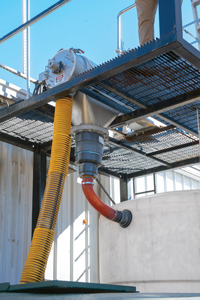
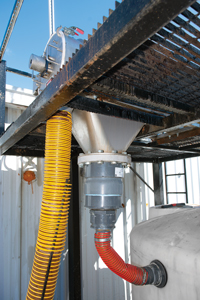
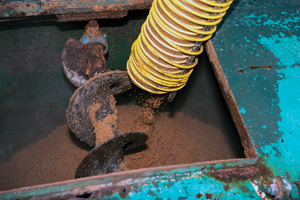
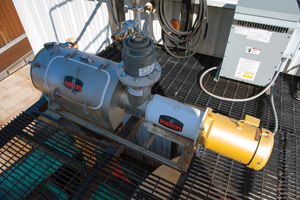
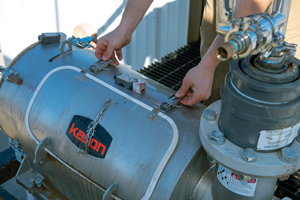
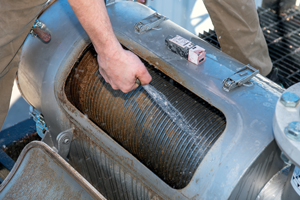
Let Kason Help You with Sustainable Spent Grain Processing Solutions. Learn more.
Grains including wheat, rye, barley malt, oats, corn and triticale (a hybrid of wheat and rye), are ground to the consistency of coarse flour, then mixed with water, cooked, mashed and fermented. After fermentation, the strip run (first round of distillation) separates out the alcohol from the fermented mash. The remaining grain/water mixture called “stillage” consists of water containing 5 to 10 percent grain solids.
In its watery state, the stillage is a waste product to the distillery but contains enough grain and nutrients to be useful to farmers as livestock feed. Originally, Bendt pumped the stillage into a 20-cubic yard disposal container for pick-up by farmers at no charge. This saved the company disposal costs as long as the stillage was collected. If it wasn’t, the company had to pay to have it hauled away.
In researching a solution, DeHart read about another distillery’s use of a centrifugal sifter to dewater stillage. He contacted the manufacturer, who evaluated Bendt’s application and recommended a Kason model MO-3BRG-SS CENTRI-SIFTER Centrifugal Dewatering Separator.
The stillage now accumulates in a 10,000 gal (38,000 l) holding tank, and is pumped about once a week into the centrifugal sifter. The water/grain mixture passes into the sifter’s horizontally oriented cylindrical screening chamber where rotating helical paddles accelerate the mixture against the screen by centrifugal force. Liquid passes through the screen, exits through a flanged discharge chute at the base of the sifter and flows into discharge piping.
Oversize grain solids are propelled along the cylindrical housing until they exit the downstream end of the cylinder and gravity feed into a 20 cubic yard (15.3 cu m) enclosed container. The centrifugal sifter operates at a rate of 30-40 gal/min (114 to 151 l/min), so emptying the tank takes four to five hours.
The unit is 74 in. (1880 mm) long, including its motor, and 32 in. (813 mm) high. The stainless-steel wedge wire screen is sized at 140 mesh (105 micron).
After dewatering, the grain still contains about 80% water but has a texture “you can hold in your hand,” DeHart says. A full container holds about 15 tons (13.6 m.t.) of grain, which is the yield of 20,000 gal (75,708 l) of stillage.
The liquid, called sour mash, is recovered, and stored to add to subsequent fermentation batches. “Using sour mash saves water, provides flavor consistency, and naturally adjusts the pH,” Ryan DeHart says.
Customizing the Distillers Spent Grain Equipment Solution
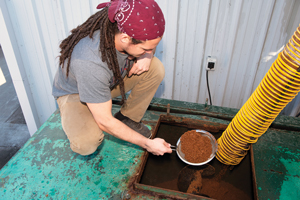

Working with Kason’s applications engineers, Bendt Distilling Company identified solutions for problem areas, such as dealing with the sludgy consistency of the stillage at the bottom of the holding tank, which could cause the sifter to stall, and dealing with stillage containing corn (a byproduct of bourbon production), that holds more water than the other grains and tends to become spongy.
Kason’s solution was to run the 230-460V 3-phase motor more efficiently at a higher voltage by adding a transformer to step up the voltage. For the corn stillage, changing the screen mesh size and installing a higher-pitch paddle assembly pulls the stillage across the screen cylinder effectively while maintaining the same throughput and de-watering performance without any clogging or imbalance, allowing unattended operation.
Ease of Cleanout
Ease of cleanout was a big factor in choosing the sifter, DeHart says. “We can clean it quickly, getting to all the pieces. With the three-bearing design, the front of the sifter opens for cleaning and changing parts. Internal components slide freely from the shaft.”
Compact Design
The sifter’s compact design was also important for the distillery, as was its low power requirements “with just a 3 hp (2.2 kW) motor,” DeHart says. Heavy duty construction also suited the distillery as the sifter is installed outdoors. Finally, DeHart appreciates that the unit is relatively quiet.
“We’re really happy with the setup,” DeHart says. “It’s a good low-cost solution compared to what else is on the market for separating the grain at a fast speed.”
Turning an Expense into Revenue
Partnering with a national feed company, the distillery worked out an agreement with a local cutting horse farm to take the spent grain. Under a profit-sharing agreement with the feed company, the distillery receives income in addition to having the spent grain hauled away at no cost.
The Kason centrifugal sifter has provided a “win-win” solution, DeHart says. “A waste byproduct for us is a useful product for somebody else.
Ready to Learn More About How to Handle Spent Grains?
Visit Kason.com | Call 973-467-8140 | Email Distilling@Kason.com
Download Kason Product Information Here


What is BrandScape? BrandScape is a way for product and service suppliers to talk directly to our audience. If you would like to learn more about BrandScape, please email Info@DistilleryTrail.com.



